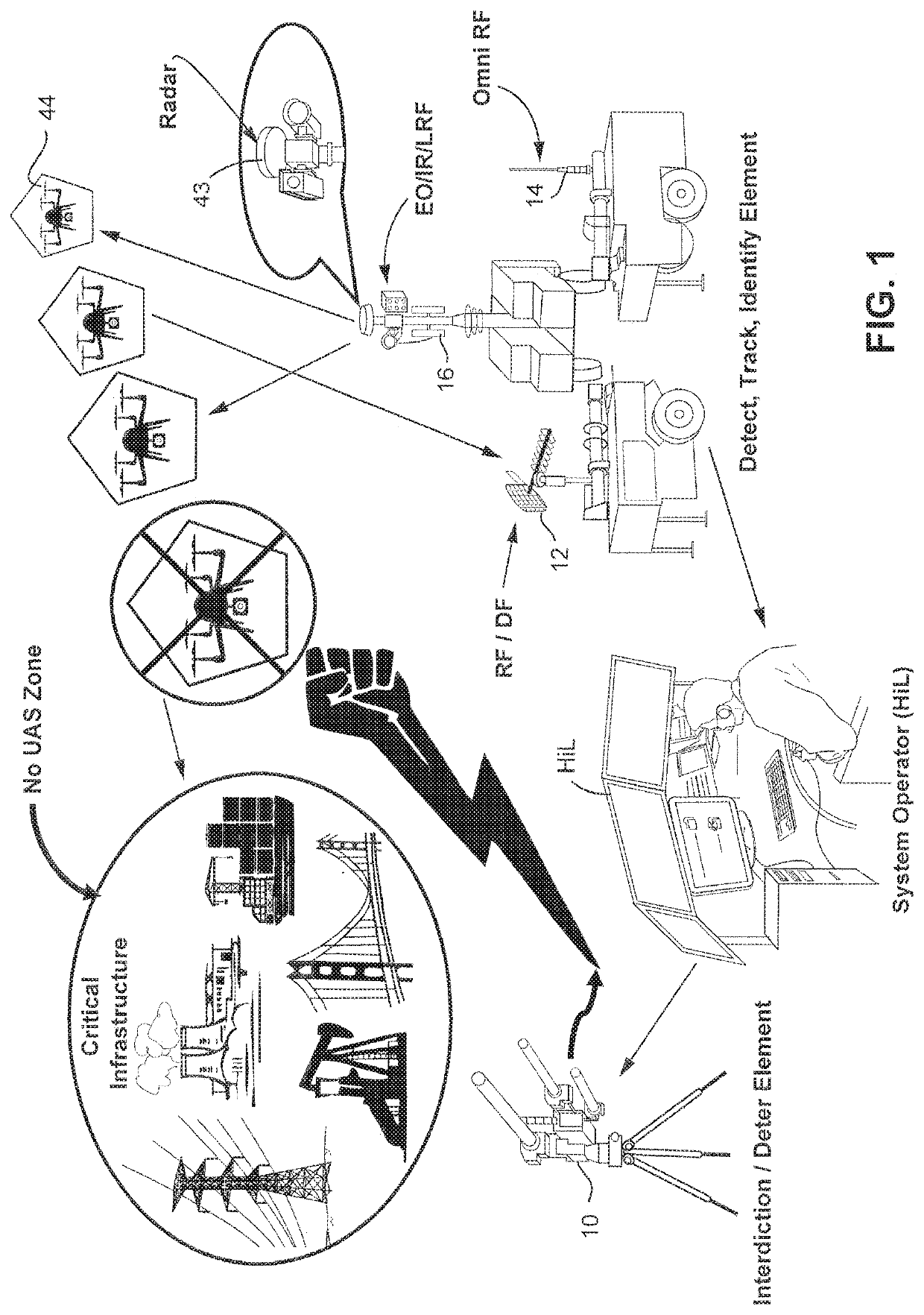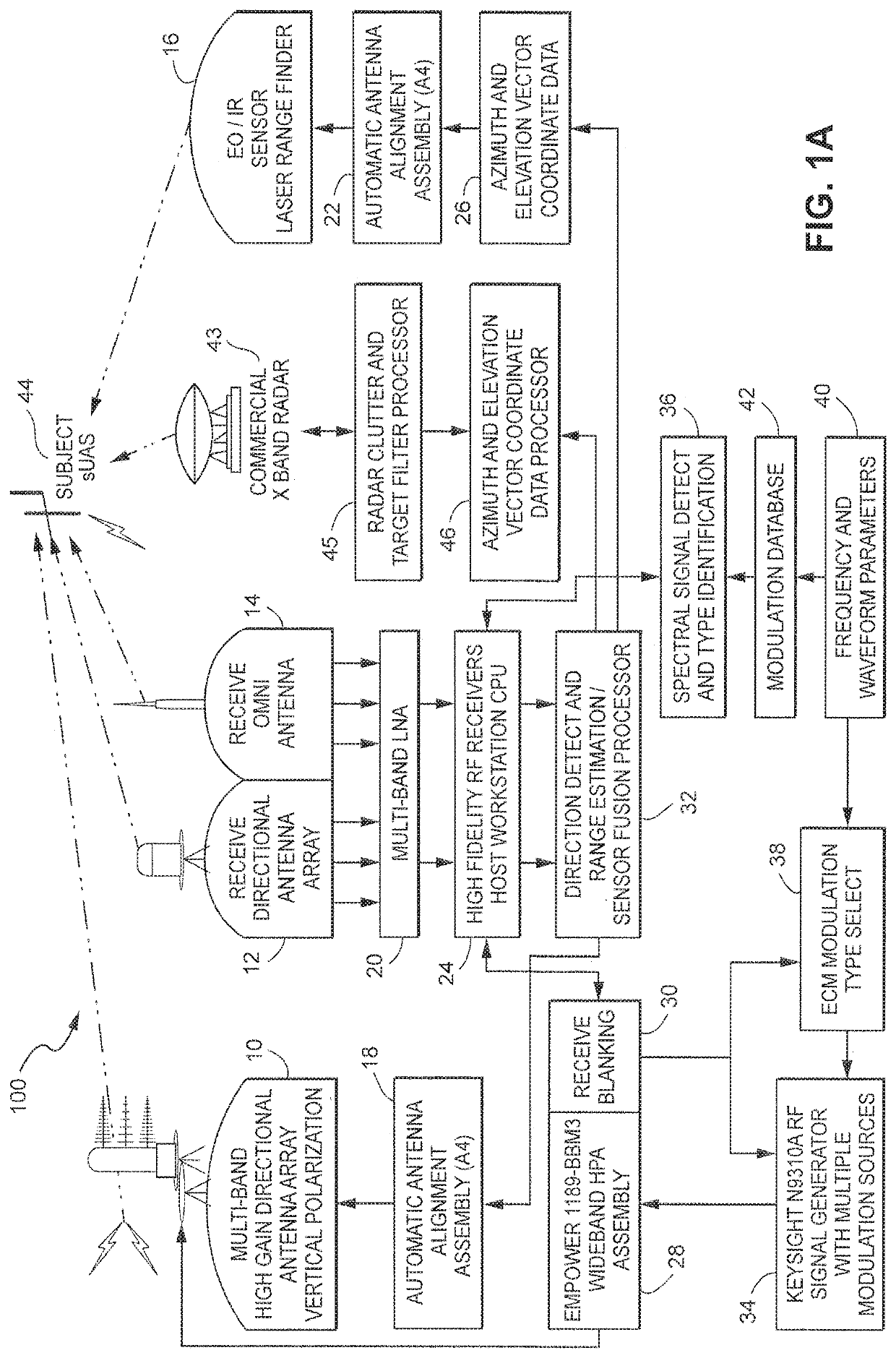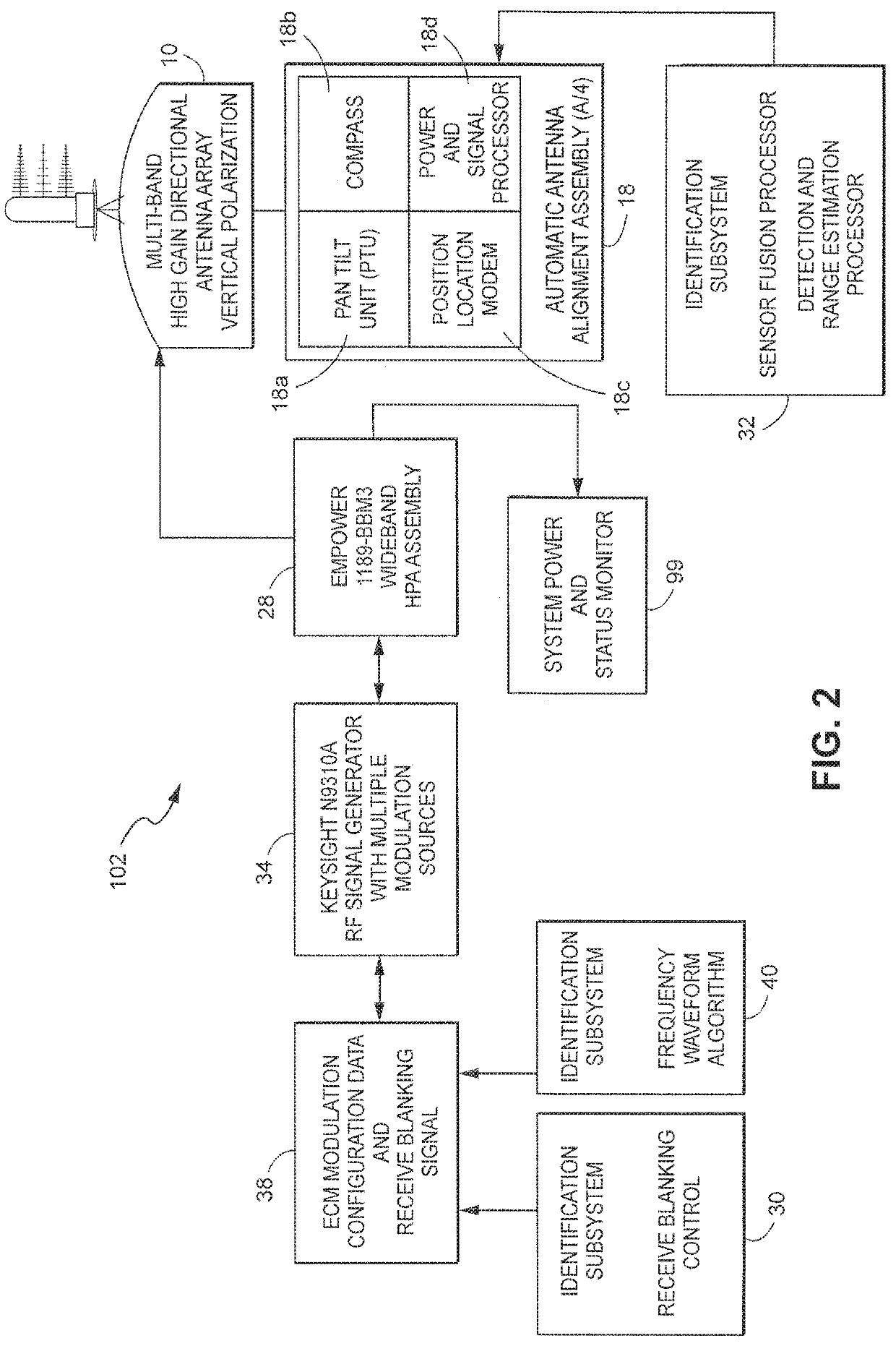Deterrent for unmanned aerial systems using data mining and/or machine learning for improved target detection and classification
a technology of target detection and classification, applied in the field of reliable detection and interdiction of unmanned systems, can solve the problems of significant hazards for commercial and general use, and the use of unmanned systems to violate personal privacy
- Summary
- Abstract
- Description
- Claims
- Application Information
AI Technical Summary
Benefits of technology
Problems solved by technology
Method used
Image
Examples
Embodiment Construction
[0016]FIG. 1 shows an example non-limiting system for detecting, tracking, classifying and interdicting a UAS such as a drone 44. Below, once the system is applied to a UAS or other drone, the UAS or other drone is referred to as the target 44 in that it becomes the target for sensing, tracking and in some embodiments, possible interdiction.
[0017]In the example shown, several different sensors using different technologies are used to detect the target 44. Such sensors include, in one non-limiting embodiment, a commercial ground based radar 43; an optical and / or infrared and / or laser range finder 16; an omnidirectional radio frequency (RF) receiving antenna 14; and a directional radio frequency (RF) receiving / direction finding antenna 12. Such equipment can be mounted on separate fixtures such as mobile trailers, or on the same fixture or other structure.
[0018]The outputs of these various sensors 43, 16, 14, 12 are analyzed using a sensor fusion processor (described below) to detect ...
PUM
 Login to View More
Login to View More Abstract
Description
Claims
Application Information
 Login to View More
Login to View More - R&D
- Intellectual Property
- Life Sciences
- Materials
- Tech Scout
- Unparalleled Data Quality
- Higher Quality Content
- 60% Fewer Hallucinations
Browse by: Latest US Patents, China's latest patents, Technical Efficacy Thesaurus, Application Domain, Technology Topic, Popular Technical Reports.
© 2025 PatSnap. All rights reserved.Legal|Privacy policy|Modern Slavery Act Transparency Statement|Sitemap|About US| Contact US: help@patsnap.com



